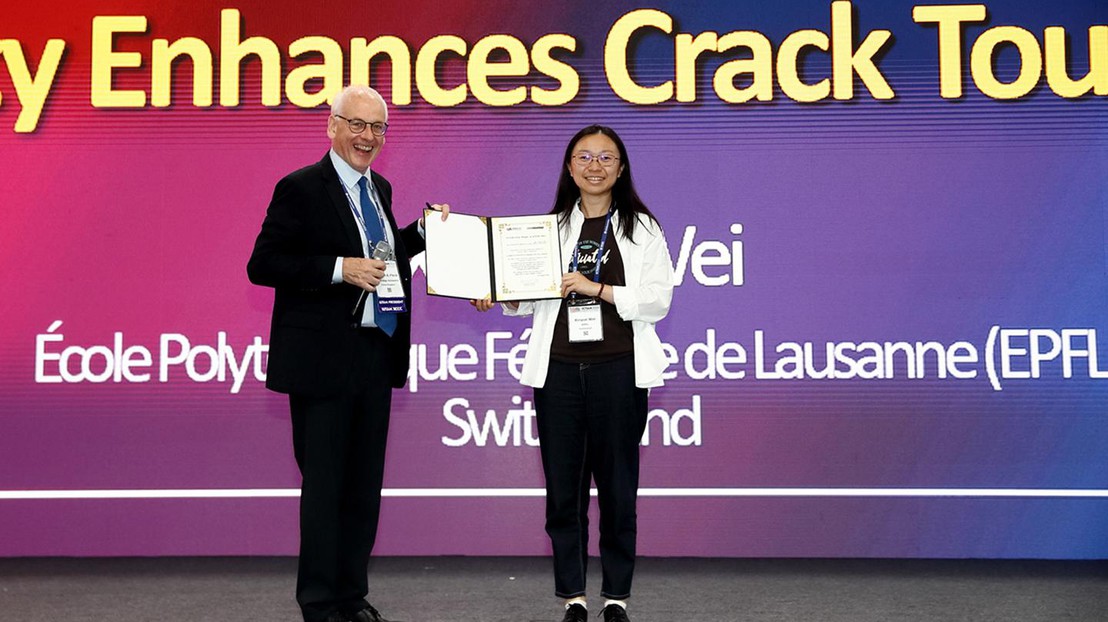Xinyue Wei wins Best Paper Presentation in Solid Mechanics at ICTAM

Professor Norman Fleck (University of Cambridge) presents Xinyue Wei with her award at ICTAM 2024 © ICTAM 2024
A PhD student in the Laboratory of Engineering Mechanics of Soft Interfaces, Xinyue Wei received the honor at the 26th International Congress of Theoretical and Applied Mechanics in Daegu, Korea, in late August.
ICTAM is a major international meeting in the field of mechanics that takes place every four years. The event spans fluid and solid mechanics, including dynamics, and promotes applied mechanics as a broad scientific field.
PhD student Xinyue Wei studies the fracture of brittle hydrogels in the EMSI lab in the School of Engineering under the supervision of John Kolinski. She received the IUTAM Prize (Bureau of the International Union of Theoretical and Applied Mechanics) for the best paper presentation at ICTAM 2024 for her talk, “Geometric Complexity Enhances Crack Toughness in Brittle Solids.” The award, which specifically honors researchers under 35, comes with $1000, a certificate, and a plaque.
ICTAM 2024 also featured invited talks by two professors from the School of Engineering. Tobias Schneider (Emergent Complexity in Physical Systems Laboratory) presented “Invariant Solutions and their Ghosts in Wall-Bounded Flows: A Variational Approach”, and Pedro Reis (Flexible Structures Laboratory) presented “The Mechanics of Surgical Knots”.
The failure of brittle solids is typically caused by crack growth and propagation. The crack tip geometry is commonly observed to be three-dimensional, with planar symmetry breaking, while the widely-used theory of linear elastic fracture mechanics (LEFM) is based on the assumption of planar cracks. Here, we aim to address the crucial gap in current 3D crack theories. The crack tip kinematics is characterized with direct experimental measurements. Using confocal microscopy, we obtain the in-situ 3D crack tip opening displacement in various brittle materials. Our results reveal a direct proportionality between the critical strain energy for crack propagation and the geodesic length of the crack front, resulting in effectively increased fracture toughness. The understanding of the toughness enhancement provides insights for engineering applications in novel materials, as well as the development of 3D fracture mechanics theories.
3D images reveal link between crack complexity and material toughness
Wei, X., Li, C., McCarthy, C. et al. Complexity of crack front geometry enhances toughness of brittle solids. Nat. Phys. 20, 1009–1014 (2024). https://doi.org/10.1038/s41567-024-02435-x